By Dan Weisz
The Palm Tree Owl family continued their general daily routine. Mom and Dad would spend time away from the nest but across the street from it. Sometimes there would be one owl there, sometimes both. As evening approached they would become more alert, ready for the night’s work ahead of them.
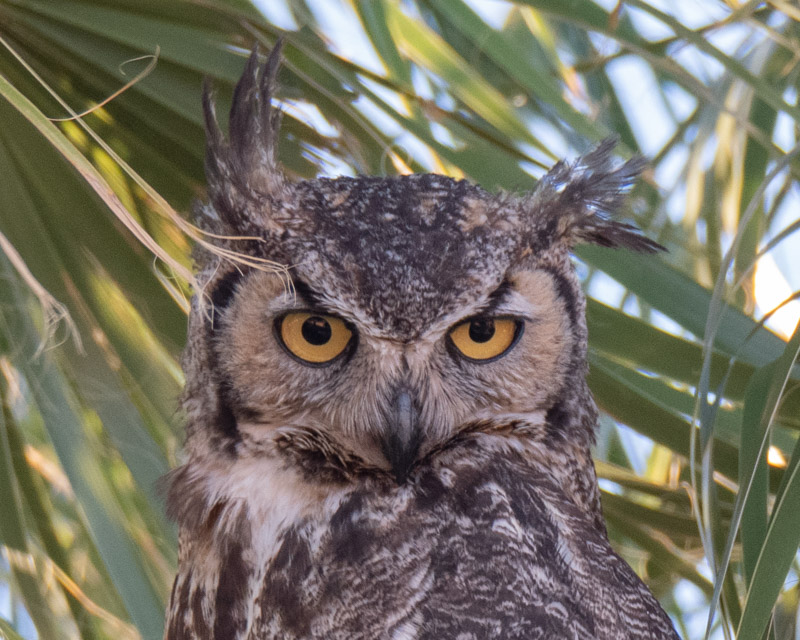
I think this is Mom as the brood patch is apparent. She’s looking right at the one youngster in the palm tree and perhaps also at the other owlet two houses down the street. Check out her talons!
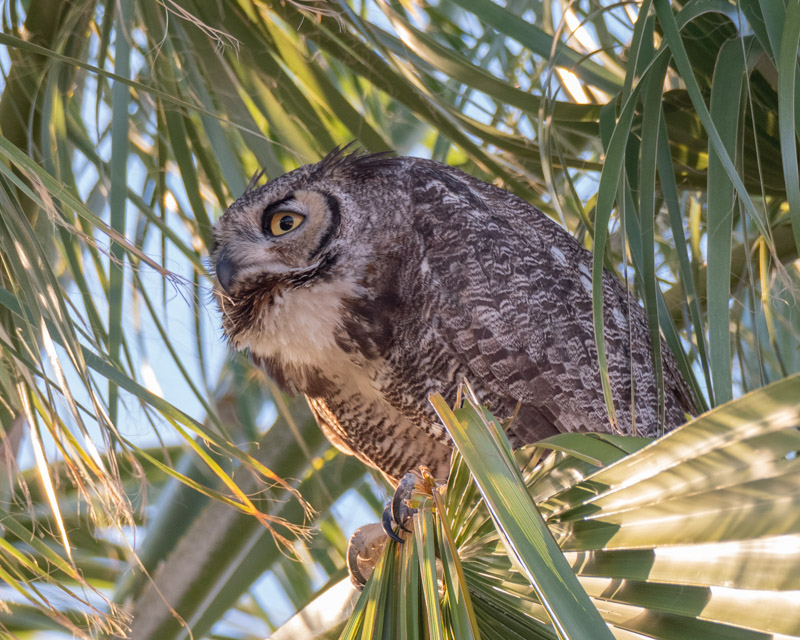
Here’s another look at the talons, looking straight up at them. Owls, like most birds, have four toes with three facing forward and one facing backwards. Great Horned Owls, in order to be a more proficient hunting machine, evolved to have one extra tool in their hunting tool box. The outer toe on each foot can swing backwards to give them a larger grabbing surface when they spread their toes and talons. Below, you can see that there are only two toes/talons facing forwards. On her left foot you can see both of the other talons facing backwards.
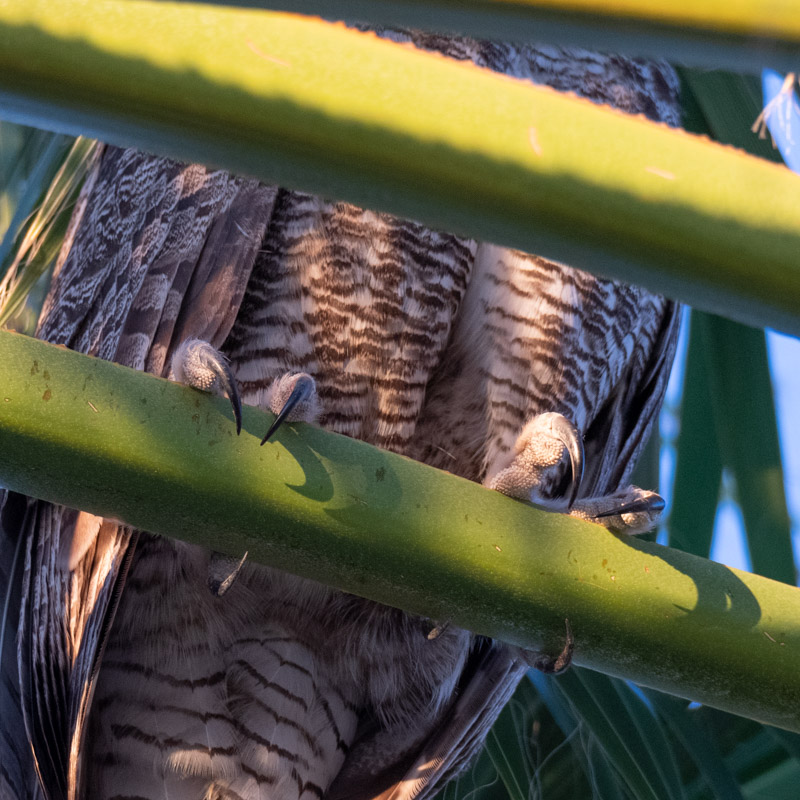
The young owlet that was in the bougenvilla plant has now flown across the street. You can see that his darker wing feathers have filled out although he still has that fuzzy, young owl look.
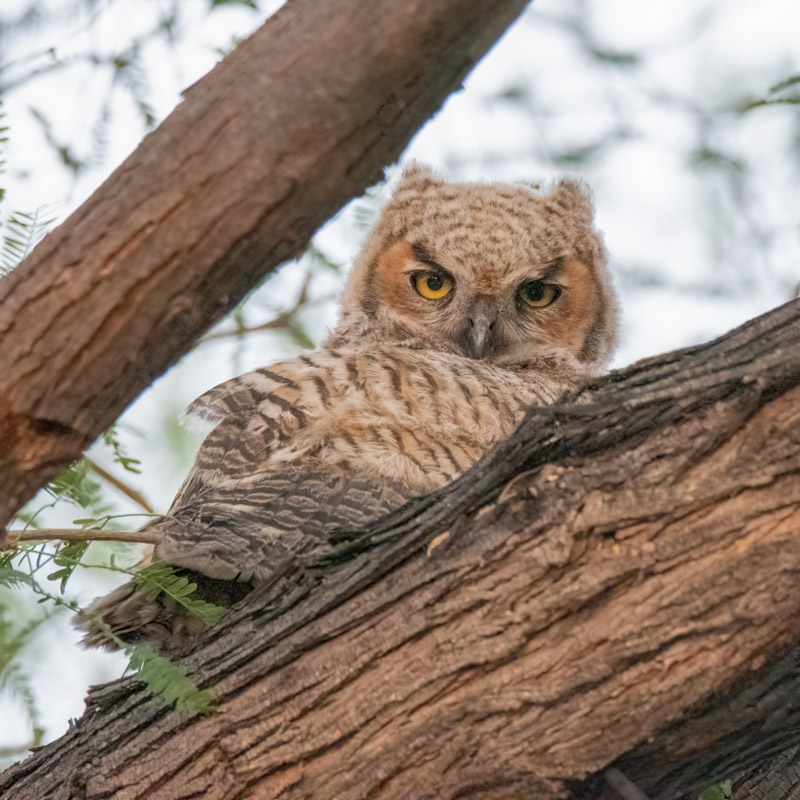
Here’s another look at this owl looking over his other shoulder.
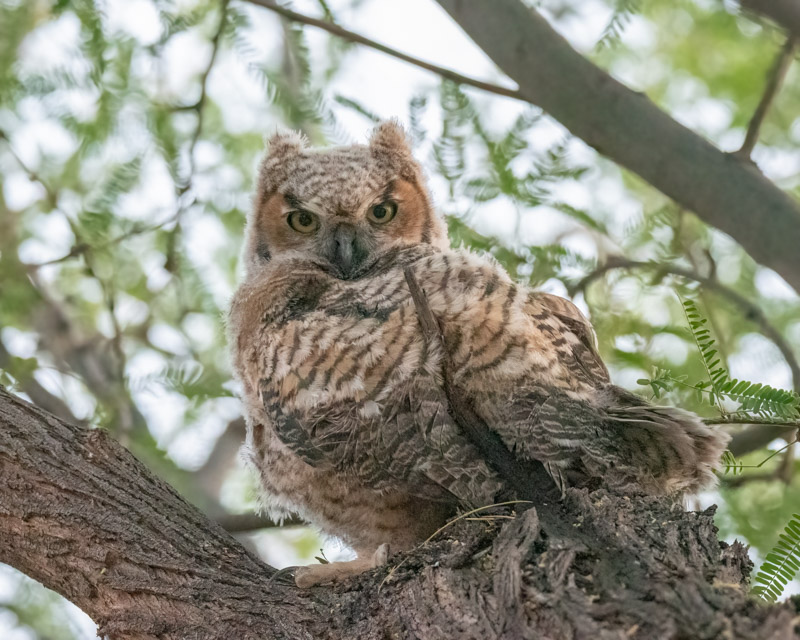
It is easy for the owl to look directly behind him. Owls and other raptors have 14 vertebrae in their necks while we humans have only 7. In addition, the bones are structured differently to allow for more movement by the owl. Becuase of these physical characteristics, an owl can turn its head 270° in either direction from the forward position. Among humans, it is said that only teachers and mothers have eyes behind their heads, but I don’t have any photos to document that.
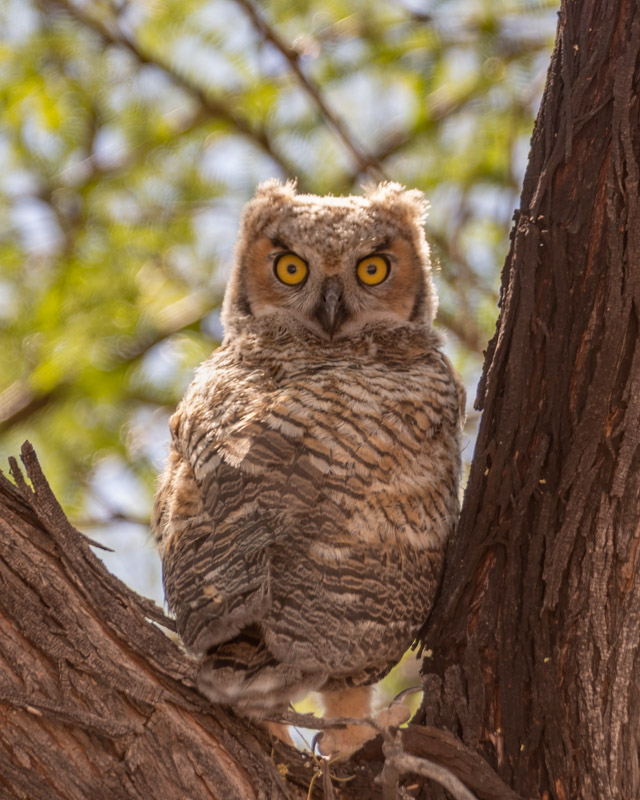
Meanwhile, the younger sibling has remained in the nest in the palm tree. Although it hasn’t ventured as far at the other owlet, it certainly is growing. One evening I saw it do its wing stretch, a common practice among raptors getting ready to fly. The length of the wing is apparent and is about twice the length of the bird itself. At some point very soon this little Great Horned Owl will make that first leap out of its nest.
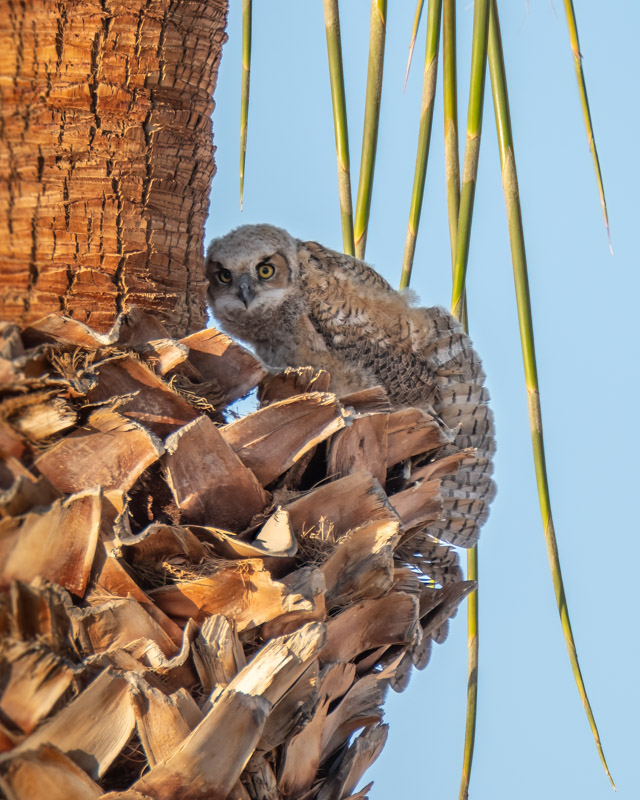
Meanwhile, the parents have moved across the ridge and into the valley in preparation of the evening’s hunt.
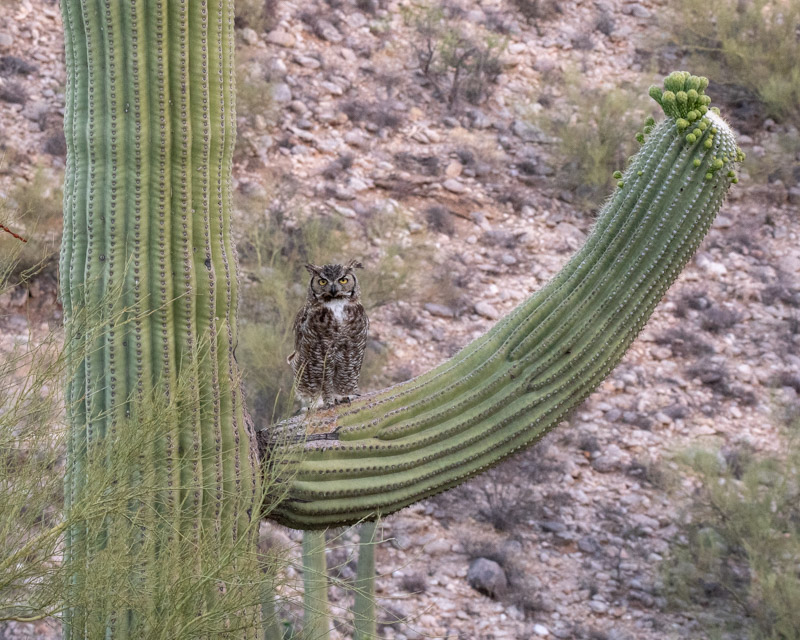
For the past many weeks, I rarely saw the Great Horned Owl adults doing any wing stretches before they flew. Perhaps they did these after dark. But tonight, I was surprised and rewarded to see this bird begin a typical stretch. The wings moved up over the owl’s back as the owl leaned forward. (Think of how you might stretch your arms upon awakening.) The owl’s tail is spread at the same time and the owl continues to keep an eye on me.
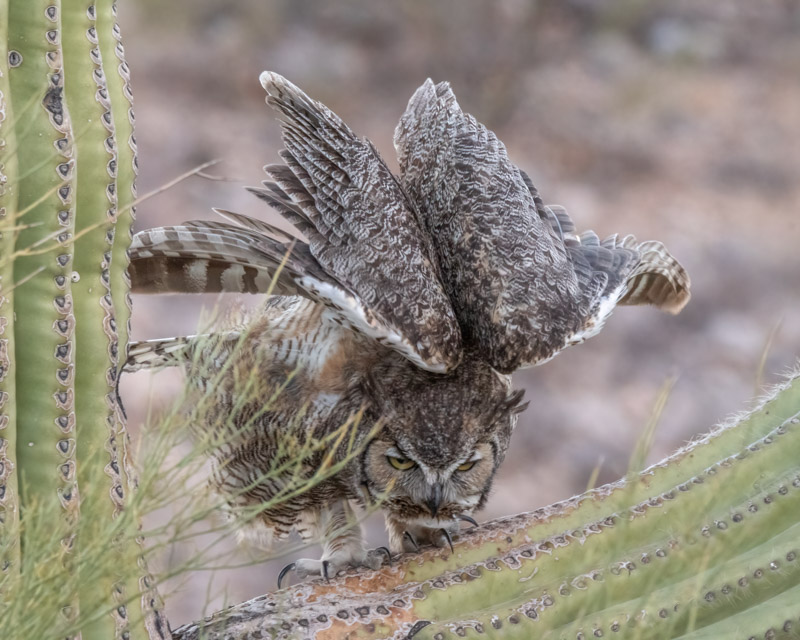
And then!!!!!
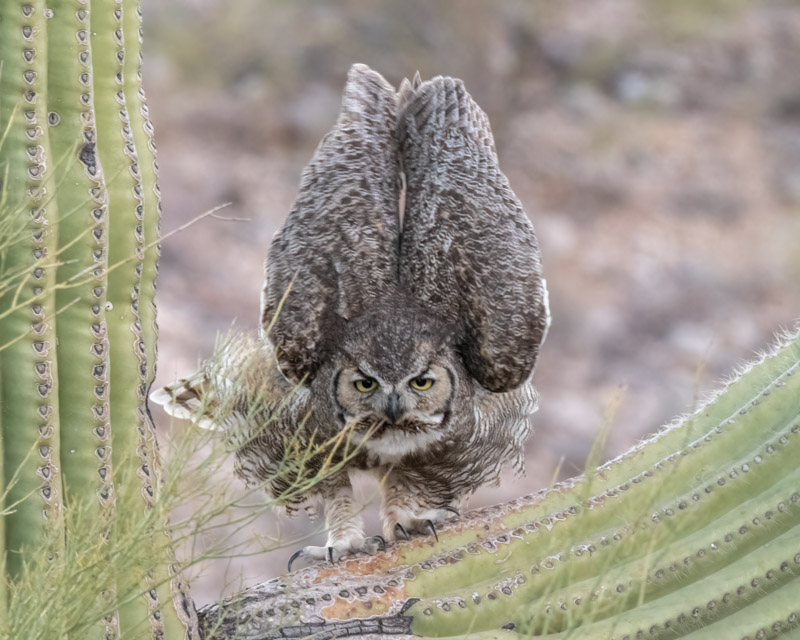
The Great Horned Owl had been in the shadows of the valley but then flew to the top of another saguaro where it was in the sunlight. In the photo below, the owl watched as the sun set. The saguaro and blossoms are now in shadow while the owl is in the golden light of sunset, just a minute or two before the shadow covers it as well.
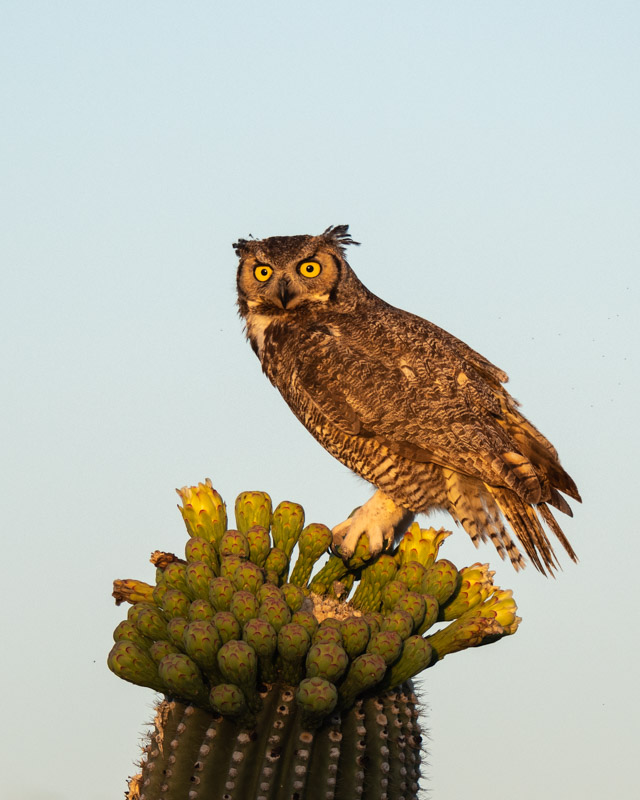
With the sun having set, the lighting changed. The Santa Rita Mountains 70 miles away turn a bit purple but the Great Horned Owl is now wide awake and ready for the evening. With the brood patch very apparent, it is easy to tell this is the female owl. Within a few minutes she flew to the top of a neighboring mesquite tree where she could observe both of her owlets and she waited for the male owl to bring home some food.
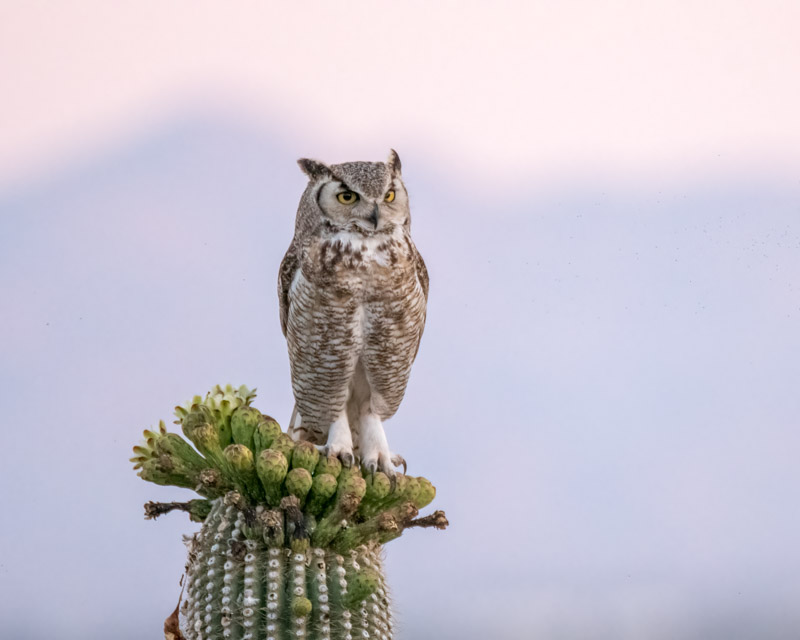
This Owl family is well on its way to a successful nesting season. The first year of the youngsters’ lives is still a very tough one and I hope they will learn well and be safe. I didn’t return to this location for almost a week and wondered if the owl family will still be around. If so, great. If not, we had an interesting time observing them throughout the nesting season.
